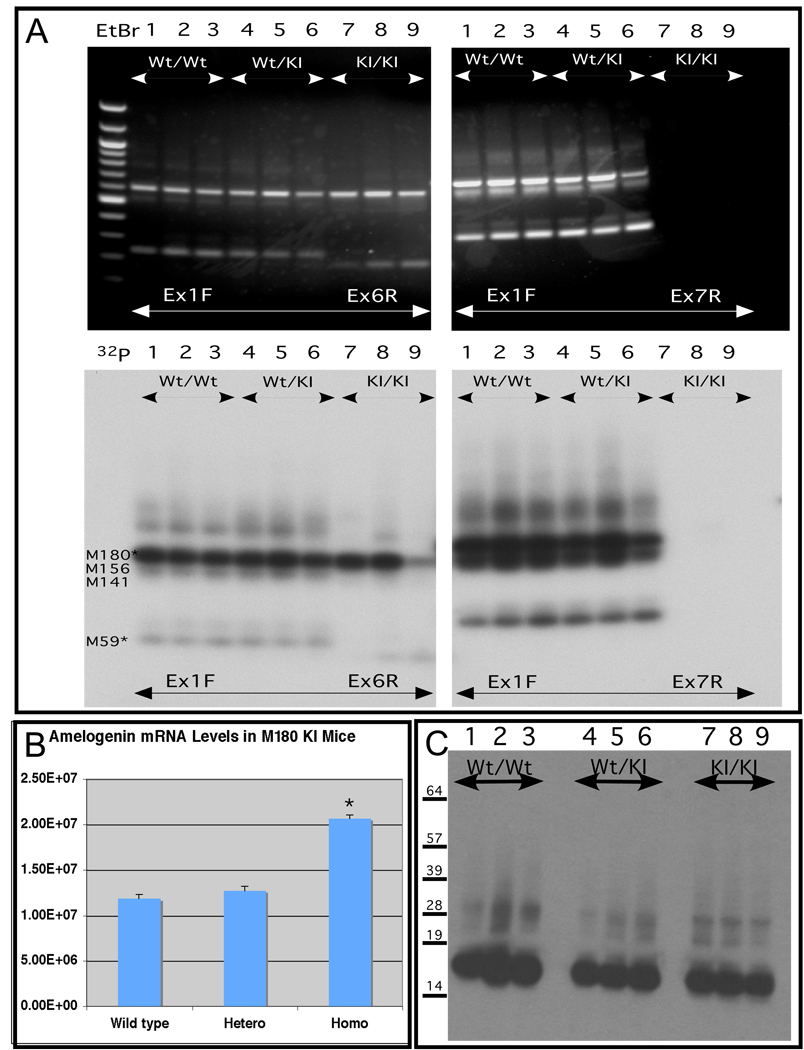Figure 2. Analysis of amelogenin RNA transcript and protein from animals bearing the knock in M180 amelogenin minigene.
Panel A. Identification of alternatively spliced transcript analysis performed by reverse transcription followed by polymerase chain amplification (RT-PCR). Total RNA was recovered from mouse mandibles, purified, subjected to reverse transcription with the resulting cDNAs characterized by polymerase chain amplification using specific amelogenin primers Ex1F, Ex6R, Ex7R, as described in the legend above. Homozygous wild type (Wt), heterozygous (Wt/KI) and homozygous knock in (KI) animals were analyzed. The upper two panels (black background) depict ethidium bromide stained amplicons. To increase sensitivity to detect low abundance transcripts, the same primers were used in the presence of 32P NTPs with the resulting radiolabeled amplicons shown in the lower two panels (white background). The predicted alternatively spliced product is marked to the left, using the nomenclature that corresponds to the number of amino acid residues encoded by the mRNA (e.g. M180, M156, M141 and etc). The presence of the wild type allele (lanes 1–6) supports the production of alternatively spliced products that are not observed for the homozygous knock in state (lanes 7–9). The failure to amplify a product with Ex1F and Ex7R confirms the absence of alternatively spliced products in the knock in since the M180 minigene lacks an exon 7 sequence (see Supplemental Figure S1).
Panel B. Quantitative RT-PCR analysis of transcript abundance based on threshold value. RNA was isolated, converted to first strand cDNA and then amplified. The resulting threshold cycle number was used to calculate the abundance of the starting transcript. RNA from 6 independent animals was used. Transcript abundance was normalized to ameloblastin. Amelogenin transcript abundance was slightly higher in ameloblasts from the M180 homozygous knock in teeth compared for the wild type amelogenin.
Panel C. Western blot analysis of amelogenin protein from teeth of knock in and wild type mice. Total protein from teeth from 3-day postnatal wild type (Wt) mice (lanes 1–3), heterozygous mice (lanes 4–6) or homozygous M180 knock in mice (KI) (lanes 7–9) mice was recovered and 20ug analyzed in each lane. No difference in the steady state amelogenin abundance between wild type and M180 knock in was identified.

